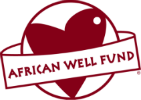By Robin Wilding
The rural district of Buhera, Zimbabwe, is home to over 2.2 million people–almost all of whom endure daily hardships and struggle over safe water. In a region that experiences little rainfall normally, socio-economic problems were further exacerbated in 2005 and 2007 when the area experienced terrible droughts.
Despite previous access to clean water, facilities have deteriorated as the groundwater table dried up as a result of the droughts. Furthermore, those trained to manage the facilities had left for urban centers, meaning the already stressed equipment wasn’t being properly managed or maintained.
There had been significant hope in the region in the 1980s as the government and humanitarian agencies developed water and sanitation programs in the region but, unfortunately, the projects lost momentum and resources have dwindled since the early 1990s.
The lack of water didn’t only impact the equipment but the locals as well, like Mr. Muza of Mupfigi village who said, “Now we won’t be late for school. It was difficult for us to go and fetch water, prepare our breakfast and go to school but now the water point is very close to our home. We are now able to catch up with school work.”
The backdrop of water insecurity and poor sanitation set the scene for the worst cholera outbreak to occur in Zimbabwe in years. This preventable illness killed 3,890 people in just nine months.
Memory and Vongai Mukwashi said of this time, “Fetching water was the most difficult task and time-consuming because we used to travel 3 kilometers to and from the water source. Our health was being compromised because we could not use plenty of water for bathing. Sometimes if one were to think of the distance to go and fetch water, one would opt to sleep without bathing.”
Enter Africare, the District Development Fund (DDF) and the African Well Fund (AWF) with their Buhera Integrated Community Water Project, which was funded in part with donations from the 8th Annual Build a Well for Bono’s Birthday fundraiser.
The hopes of this project were to work with and mobilize the community to rehabilitate three boreholes and to sink six new deep wells fitted with water-lifting devices in order to ensure water security and minimize the spread of diarrheal disease through access to clean and safe water. The project aimed to benefit at least 2,200 people in the region and to reduce walking distances to safe water points from 3.5 kilometers to 1 kilometer maximum. The project also aimed to train 22 water point committee members, 10 well sinkers and six pump minders with a specific focus on including women in the decision-making process, implementation and on-going management.
An old man from Mupoperi village said of the project, “As you can see my son, I am very old. I am 82 years old. I used to pay someone to go and fetch water for me because the water source was too far for an old man like me. Now I can do it for myself. I am staying alone. Thank you very much Africare. What I need now is a toilet at my homestead.”

Despite the challenges of incredibly hard rock and community inaccessibility from droughts and floods, the project did achieve all of its goals, and more.
Through the project, continuing mobilization meetings were held within the community where the sites of the boreholes and wells were chosen, and the needs of the area assessed. The community, Africare and the DDF then worked together to train well sinkers, pump minders and committee members. Africare also hosted community health education events to train community volunteers on proper hygienic procedures to help reduce outbreaks of cholera, diarrhea and other water-borne diseases. There are now 11 community health clubs in the Nerutanga ward manned by trained volunteers.
The project aimed to rehabilitate three boreholes, but in the end rehabilitated eight by using leftover and salvaged parts. A total of six deep wells were sunk, with an average depth of 9.5 meters. The community was united on the project, with volunteers forming bricks, laying them and procuring other physical local resources such as sand, gravel and water. All of this came at no monetary cost to the community, other than the incredible amount of man hours dedicated to the project.
The project used local resources, community volunteers and appropriate technologies, meaning that the project can be easily enough replicated amongst neighboring communities.
Village head Mr. Mureza Mupoperi said of the project, “During the dry season, we used to go to Usoma village which is about 3 kilometers from here to fetch water. We have tried to dig wells at our homesteads but the wells could not yield water. For those that yield water, the water doesn’t last for five months. Now I have a well fitted with a bush pump in my village at a stone’s throw from my homestead, this is a miracle indeed. On behalf of my village, I thank you very much Africare.”
To learn more about the Zimbabwe Buhera Integrated Community Water Project, click here.
To make a donation to this year’s Build a Well for Bono’s Birthday fundraiser, click here.
